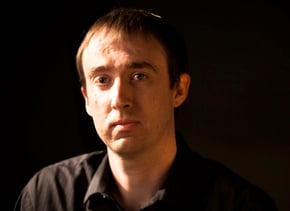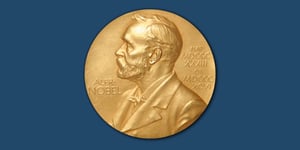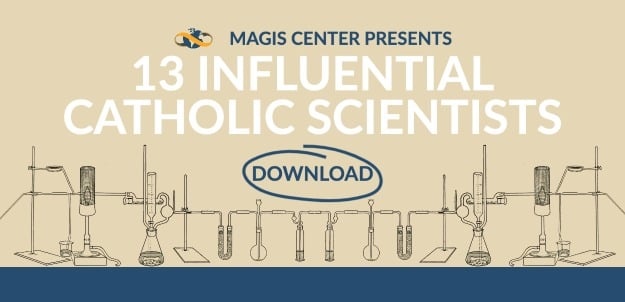“The history of Science is not a mere record of isolated discoveries; it is a narrative of the conflict of two contending powers, the expansive force of the human intellect on one side, and the compression arising from traditionary faith and human interests on the other.”1
—John William Draper, History of the Conflict between Religion and Science
“I believe in one God, the Father almighty, maker of heaven and earth, of all things visible and invisible.”
—The Nicene Creed
Since the first Nobel Prizes in Physics, Chemistry, and Physiology or Medicine were awarded in 1901, several members of the Catholic clergy have supported or collaborated with Nobel laureates and made enduring contributions to the scientific enterprise. Before reviewing these figures and contributions, a brief survey of the Catholic Church’s relationship with the development and advancement of science will provide historical context.
A Brief Survey of the Historical Relationship Between the Catholic Church and the Development of Science
Professor Ian Barbour outlined four ways of relating science and religion in his Religion in an Age of Science2:
- Conflict
- Independence
- Dialogue
- Integration
The conflict thesis maintains an inherent hostility between religion and scientific progress. Although it has historical antecedents, this thesis was popularized in the nineteenth century by John William Draper in his History of the Conflict between Religion and Science (1874) and Andrew Dickson White in his History of the Warfare of Science with Theology in Christendom (1896).
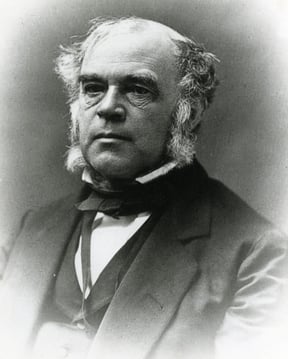 John William Draper by Edward Bierstadt / Public domain via Wikimedia Commons
John William Draper by Edward Bierstadt / Public domain via Wikimedia Commons
Although the works of Draper and White have been discredited by modern scholars,3 the conflict thesis still holds wide sway. According to a 2015 Pew study, 59% of Americans say science and religion are often in conflict. Even more striking, 73% of adults who seldom or never attend religious services say science and religion are often in conflict.4
In light of a precipitous decline in Catholic faith practice over recent decades,5 it is imperative to examine and correct the historical record. Although the historical relationship between the Catholic Church and science is complex and offers well-known points of conflict, like the Galileo Affair, engagements marked by dialogue and integration are less widely appreciated. The Catholic Church and individual Catholics have contributed to the development of science for more than a millennium. These contributions can be organized into the metaphysical, institutional, and personal categories.
At the metaphysical level, Pope Benedict has highlighted the importance of the Church’s engagement with Greek philosophy.6 Enlightened by faith and reason, Catholics believe God created the universe freely out of nothing and that the universe is rational and orderly. Because nature is created by God, it is worthy of study. Avoiding a pantheistic understanding of creation, however, Catholic thought appreciates the distinction between Creator and created things. The vast metaphysical structures needed to examine the Eucharist and the Trinity also helped prepare the European mind for the Scientific Revolution.
At the institutional level, monasteries were important for the preservation of foundational texts from antiquity. Continuing a long history of commitment to education, the Church was integrally involved in the creation and flourishing of universities in the High Middle Ages, an essential contribution to the development of science.7 Today, in the United States alone, there are more than 200 Catholic colleges and universities, with a total enrollment of about 700,000 students.8
With the support of the papacy, several Jesuit astronomers led the Vatican Observatory. With roots extending back to 1582 and the reform of the calendar, the Vatican Observatory was re-founded in 1891 by Pope Leo XIII. In the 1930s, the Observatory moved near the Papal Summer Palace at Castel Gandolfo, with a dedication from Pope Pius XI in 1935. In 1993, the Vatican Advanced Technology Telescope was established in Arizona, where scientific research continues to this day.
The Pontifical Academy of Sciences was established in 1936 by Pope Pius XI to show the complementarity of faith and science and “give an ever greater and higher contribution to the advance of science.”9 Dozens of Nobel laureates have been members of the Academy, including Niels Bohr, Werner Heisenberg, Max Planck, Alexander Fleming, and Erwin Schrödinger.10
At the personal level, there have been thousands of noteworthy Catholic scientists, both laymen and ecclesiastics, including over 1,000 Jesuits.11 There are also several Catholic Nobel laureates, including Guglielmo Marconi (Physics, 1909), Peter Debye (Chemistry, 1936), Victor Hess (Physics, 1936), and Joseph Murray (Physiology or Medicine, 1990).
Catholic Nobel Collaborators
With this historical context, we will now examine two well-known Catholic scientists: a Nobel laureate who was closely connected to the papacy and a priest who collaborated with Albert Einstein. Then, in part 2, we will meet several more Nobel collaborators and conclude with a vision for the future.
Catholic Nobel Laureate Marconi and the Papacy
Guglielmo Marconi (1874–1937) offers an example of close collaboration between high-level scientific achievement and the Catholic faith. Marconi shared the 1909 Nobel Prize in Physics for his “contributions to the development of wireless telegraphy.”12 Marconi was also a devoted Catholic who read the New Testament, The Imitation of Christ, and the writings of St. Augustine. After his conversion from Anglicanism, Marconi’s Catholic faith provided him strength for the remainder of his life.13
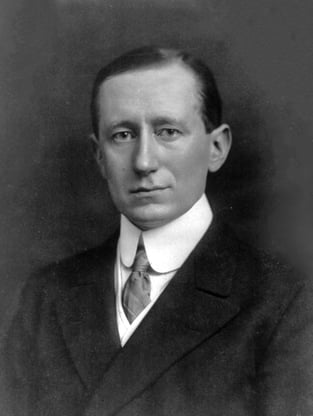 Guglielmo Marconi by the Pach Brothers / Public domain via Wikimedia Commons
Guglielmo Marconi by the Pach Brothers / Public domain via Wikimedia Commons
Marconi maintained a close relationship with the papacy. He developed a friendship with Pope Pius XI. They worked together to establish Vatican Radio, which was inaugurated in 1931. Pius XI also received the Marconis for private audiences.14 The future Pope Pius XII, Eugenio Pacelli, baptized Marconi’s daughter, Elletra. As pope, he also celebrated her First Communion and Confirmation.15
Lemaître and Nobel Laureate Einstein
The Belgian priest Georges Lemaître (1894–1966) was one of the giants of twentieth-century cosmology and astronomy. Lemaître collaborated with the top astronomers and physicists of his time, including Arthur Eddington and Harlow Shapley. His most prominent collaborator was Albert Einstein, who received the Nobel Prize in Physics in 1921. Lemaître and Einstein met in both Belgium and the United States.
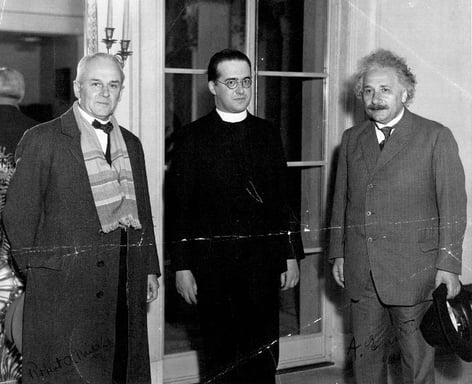 Robert A. Millikan, Georges Lemaitre, and Albert Einstein at California Institute of Technology, January 1933 by an unknown photographer, probably a Caltech employee / Public domain via Wikimedia Commons
Robert A. Millikan, Georges Lemaitre, and Albert Einstein at California Institute of Technology, January 1933 by an unknown photographer, probably a Caltech employee / Public domain via Wikimedia Commons
Lemaître applied Einstein’s theory of general relativity to cosmology. In 1927, he proposed the expansion of the universe. He also predicted what is now known as the Hubble-Lemaître Law, which states that galaxies are moving away from Earth at speeds proportional to their distance. Einstein was initially skeptical of Lemaître’s expanding universe but supported it after Edwin Hubble’s astronomical discoveries. In 1931, Lemaître proposed what is now known as the Big Bang theory.
For these contributions and others, Lemaître was nominated for the Nobel Prize in Physics in 1954 and the Nobel Prize in Chemistry in 1956. In 1960, Lemaître was elevated to the rank of monsignor and was appointed president of the Pontifical Academy of Sciences by Pope St. John XIII, a position he held until his death in 1966.
Footnotes:
1. John William Draper, History of the Conflict between Religion and Science (New York: D. Appleton and Company, 1874), iv.
2. Ian G. Barbour, Religion in an Age of Science (San Francisco: Harper & Row, 1990).
3. See, for example, the work of David Lindberg, Edward Grant, Stanley Jaki, James Hannam, and Lawrence Principe.
4. “Religion and Science” Pew Research Center, October 22, 2015, https://www.pewresearch.org/science/2015/10/22/science-and-religion/.
5. Jeffrey M. Jones, “U.S. Church Membership Falls Below Majority for First Time” Gallup, March 29, 2021, https://news.gallup.com/poll/341963/church-membership-falls-below-majority-first-time.aspx
6. Benedict XVI, “Faith, Reason and the University: Memories and Reflections,” September 12, 2006, https://www.vatican.va/content/benedict-xvi/en/speeches/2006/september/documents/hf_ben-xvi_spe_20060912_university-regensburg.html.
7. See, for example, The Foundations of Modern Science in the Middle Ages by Edward Grant.
8. “Catholic Higher Education FAQs,” Association of Catholic Colleges and Universities, accessed September 30, 2023, https://www.accunet.org/data.html.
9. Pius XI, “In Multis Solaciis,” October 28, 1936, https://www.pas.va/en/about/motu-proprio.html.
10. “Nobel Laureates,” The Pontifical Academy of Sciences, https://www.pas.va/en/academicians/nobel.html.
11. Through 15+ years of research, I have compiled a database of over 6,000 noteworthy Catholic scientists, including over 1,000 Jesuits.
12. “The Nobel Prize in Physics 1909,” The Nobel Prize, https://www.nobelprize.org/prizes/physics/1909/summary/.
13. Marconi, Maria Cristina, Marconi My Beloved (Boston: Dante University of America Press, 1999), 18-23.
14. Marconi, Marconi My Beloved, 126-129
15. Marconi, Marconi My Beloved, 93-95
